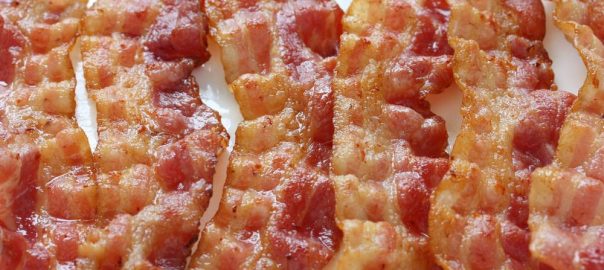
Great Cooking Guide for Perfect Bacon
How to Cook Perfect Bacon Each and Every Time
Bacon is the kind of food that gets people really excited. It’s got a million uses in all different kinds of cuisine. You can find it virtually everywhere in the world, and is popular at breakfast, lunch and dinner. You’ll see a mountain of it at breakfast buffets, and find it wrapped around beautiful filet mignons at the fanciest steak restaurants. It’s always the first thing you’ll find gone off of your kids’ plate at breakfast on the weekend, and when asked if you want bacon on your burger, the answer is inevitably going to be ‘YES!’. Bacon is just plain delicious, and there’s no two ways about it. You’ll even find bacon flavouring in just about everything, from dips and salad dressing to barbecue sauce and snack chips.
However, there are plenty of differing opinions out there on what makes the best bacon. That’s why we’ve put together this guide for you. Making bacon perfect every time usually takes a bit of practice, but with this collection of tips and tricks, you’ll become a pro in no time.
Here, you’ll learn about the different kinds of bacon, and how you can adjust your cooking style to end up with either chewy bacon or crispy bacon, and every kind in between. We’ll teach you a cool trick to avoid grease splatters, and how to use either a frying pan or your oven to get great results every time.
Let’s start by looking at the various types of bacon, and how they differ.
Guide to Bacon Types
The most common type of bacon that you are all probably familiar with goes by many different names. You’ll often find it referred to as smoked bacon, American-style bacon, or slab bacon. While they are all made with the same basic process from pork belly, there are still some variations between them. American-style bacon is the most generic term for the thin slices of salty fried bacon that you can find pretty much anywhere. Smoked bacon adds additional flavour by being smoked with such woods as Applewood or hickory. Slab bacon is simply a large section of bacon that has not yet been sliced in to thin strips and is usually found at specialty butchers, allowing you to select your desired slice thickness.
The next most popular and common type of bacon is known as either Canadian bacon or back bacon. This type of bacon is made from the back tenderloin of the pig and has a consistency and flavour that is more similar to ham. This type of bacon can also be rolled in peameal prior to being sliced, and then is typically referred to as peameal bacon.
Pancetta is an Italian version of bacon and is close in appearance and taste to American-style bacon. It is generally seasoned with a blend of spices including peppercorns, cloves, and salt. Pancetta is common at most deli counters and is also popular as a cold deli meat.
Frying Pan or Oven?
Just like there are different kinds of bacon, there are also different methods of cooking that you can choose from. The two most popular and effective ways to cook bacon are by using a frying pan on the stove top, or a rack in the oven. Both work very well and allow you to produce bacon anywhere on the range of chewy to crispy. In general, the frying pan offers speed and convenience when cooking smaller amounts of bacon, whereas the oven allows you to cook much larger quantities simultaneously. At the end of the day, depending on your preference and how much bacon you need to prepare, either method works just fine.
Pan Frying Bacon Method
The best frying pans for bacon are wide, flat and heavy. Cast iron is the preferred choice of many bacon chefs, but they aren’t essential. Any good quality pan will do a fine job. You’ll want to lay your bacon out in the pan while it’s still cold, and make sure not to crowd too many slices in at one time.
The key to cooking bacon is to remember ‘low and slow’. You want to cook your bacon on low temperature and take your time. A pan that’s too hot will result in bacon that’s too crispy or even burnt in some places, and very chewy in others. You want to aim for consistency, so keep the temp low and the time slow.
Frying bacon in a pan also requires frequent attention and lots of turning. Every pan and stove will have variations in temperature along the surface, and not all bacon will have exactly the same meat-to-fat ratio or the same thickness, so each slice will cook at a slightly different rate. Move things around in the pan with a good set of kitchen tongs to ensure that the whole batch is cooking consistently as you go.
If you’re cooking up multiple batches of bacon – i.e. the amount you need to cook won’t all fit in the frying pan at once, then you’ll want to tip out the grease in between batches. Be especially careful when pouring bacon grease out of a hot pan, as unexpected splatters can be very dangerous. Be sure that no grease has dripped down the side and on to the bottom of the pan before you place it back on the stove to begin the next batch, as this may cause a grease fire.
When determining when the bacon is officially done, keep in mind that it will continue to cook for a short time even once it’s been removed from the pan, so gauge your crispiness or chewiness accordingly to ensure that the final product suits your taste. When in doubt, it’s best to take it off early to avoid overly crunchy and dry bacon. Place the cooked bacon on to a plate lined with a paper towel to absorb the excess grease, and cover with aluminum foil and place in a warm (220F) to keep warm until your batch of bacon is all done.
How to Stop the Splattering
One of the minor annoyances of cooking bacon is the inevitable popping and splattering of the grease. However, there’s a simple trick that expert bacon chefs are sharing to help prevent splattering. All you need to do is simply place a small amount of water in the pan when it’s still cold. You don’t need much to have this trick work. Just enough to cover the bottom of the pan once the bacon has been laid out is all you need. As the pan heats up, the small amount of water will help render the fat that will come from the bacon as it cooks and keep it from popping and splattering.
Or… get a good splatter guard lid. Made of a mesh, or screen-like material, they splatter guard lids avoids condensation from forming on the lid as it can breathe, and it catches all of the grease splatters during the cooking process.
Oven Cooking Bacon Method
Cooking bacon in the oven is extremely easy and works great for very large batches when you need a lot of bacon for big family breakfasts or if you need a large amount to use for other recipes.
Preheat your oven to 400°F and spread your bacon out on a baking sheet. Line the sheet with foil first followed by parchment paper for easier clean-up. If you prefer your bacon to be on the crispier side, you can use a raised metal rack on top of the baking sheet to provide more air movement around the bacon and allow the grease to drip down on to the sheet away from the bacon as it cooks.
Average cooking times for bacon in the oven range from 12 to 20 minutes, depending on your preferred level of crispiness or chewiness, and the thickness of the bacon slices. In general, we recommend that you check the bacon at around the 10 – 12 minute mark to gauge progress, and adjust your timing accordingly.
Conclusion
Well now, we expect that you’re already planning your next batch of bacon, so we’ll keep this ending short and sweet. Making great bacon isn’t complicated, but like most other kinds of cooking, it does require the right method and a chef that’s willing to pay attention in order to get the best results. After all, isn’t great bacon really worth the effort? We definitely think so!






